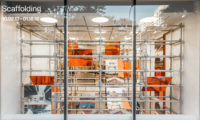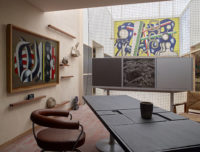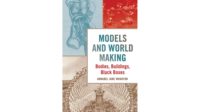A faded, sepia-toned photograph of that 1936 house, plus other ephemera that shaped Scott Brown’s and other high-profile architects’ worldviews, paints a picture of the past in Farrow’s Childhood ReCollections: Memory in Design, on view at London’s Roca Gallery through January 26.
Based on her interviews with Scott Brown, Zaha Hadid, Daniel Libeskind, Kengo Kuma, and Nieto Sobejao, plus English milliner Philip Treacy, Farrow assembled what she describes as a “cabinet of curiosities” to illustrate early glimmers of inspiration from their youth: Libeskind’s sparkling red accordion, for example, alongside Frank Lloyd Wright's designs for the unbuilt Baghdad Opera House, which Hadid recalls seeing when she was six years old—long before she ever met Rem Koolhaas. Also on view are the requisite architect baby pictures, including a young Kuma posing in front of Kenzo Tange's 1964 Tokyo Olympic Stadium wearing a tiny pair of shorts.
“In the process of curating the exhibition, some fascinating patterns have emerged,” Farrow said. “The impact of world history on these very intimate stories; themes of displacement and difference; the importance of nature and music in childhood; and the involvement of all the senses in establishing a unique design vision,” —all of which occurred well before architecture school.



















Post a comment to this article
Report Abusive Comment